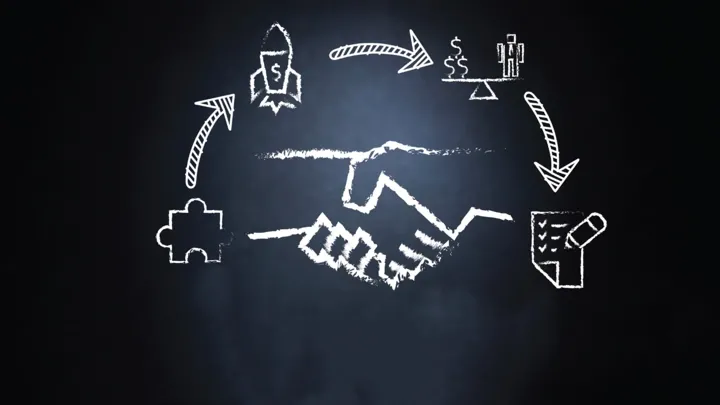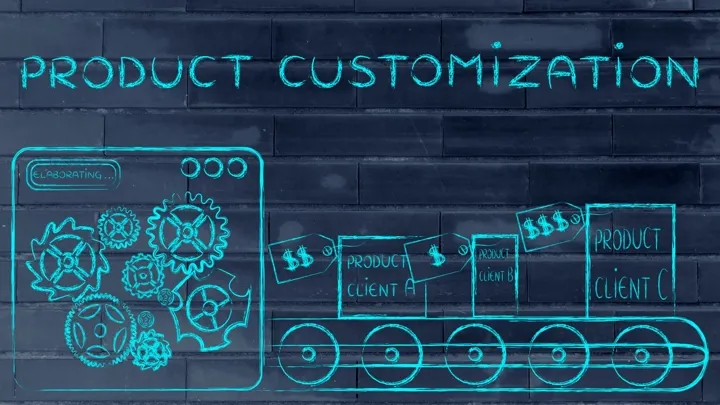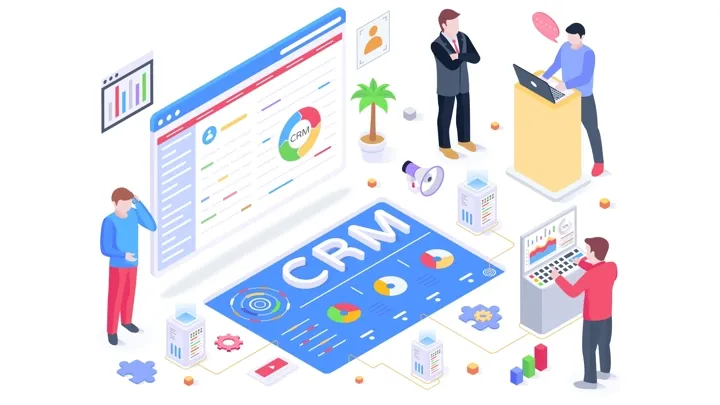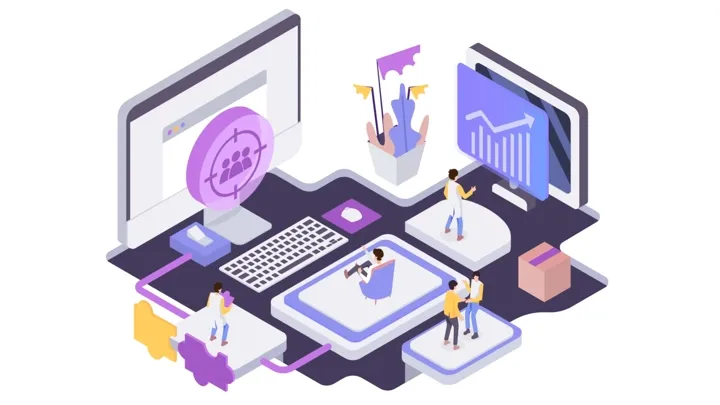
The challenges of sales, especially B2B sales challenges, are never-ending. You will be surprised to know that 40% of companies failed to meet their sales targets in 2021. Various factors pose a problem and deteriorate the performance of salespeople. Factors like unorganized processes, poor leadership, no target, no sales planning, and much more add to poor sales performance.
While some of these issues are easy to identify, there are some which usually go unnoticed and stand in the way of your success. Identifying these problems needs a lot of time and hard work. But with this blog here, we have tried to solve the biggest B2B sales challenges that salespeople face daily but couldn't easily recognize. Once you learn to turn your challenges into sales, there's no looking back. You can then easily fill those pipelines, exceed metrics, and beat quotas to stay ahead of your competitors.
Top B2B sales challenges:
Here are the top B2B sales challenges, along with the solutions to beat them.

1) Resistance to Change:
Though we know change is the only constant, humans usually don't want to accept changes instantly due to their insecurities. Even if the change is for good, adapting to it seems difficult. Most sales companies fear to accept the change that may happen to their product or service or within the company structure. The leading cause behind this fear is that they think their staff might take time to accept the change, which hampers the process and their progress.

Solution:
There are quite a few solutions to this challenge. When you are afraid of something, spread some of that fear within your prospects too. In this case, even your competitors would fear losing the market, and hence it neutralizes the situation to some extent. Another way to tackle this problem is by creating tailor-made products for the customers. It would ensure they readily accept everything. If you can arrange a full-blown demonstration of your product before selling, it is an easy way to sell it.
2) Delay in Decision Making:
Decision-making is always an important factor in a sales deal, and the lack of it can hinder the successful closing of the deal. Prospects give many reasons for not closing the deal, like they cannot decide on the purchase of the product and want to postpone it. Another excuse is that they are just not ready to take the final call and would like to postpone it for some time. These excuses might be valid in some cases, but mostly these are gentle ways to say no, and this is a considerable challenge that B2B sales reps face daily.

Solution:
As a salesperson, it is your job to identify whether their delay is honest or just an excuse. If it is true and the prospect is facing real issues, you can do nothing. But if the prospect is making excuses just because he is unclear about things, you can help him out by giving more inputs and winning his trust.
You can always provide additional information and demonstrations for helping the client in decision-making. Besides that, you can directly ask your prospects what they are expecting and evaluating and how your product/service can benefit them.
3) Pricing Challenge:
Every B2B sales deal witnesses a price challenge here and there, no matter how economical your product or service is. Even if the product is rightly priced, the prospect will bring up some problems. A major challenge that the salespeople usually face is at what part of the deal should the price be introduced and what to do to prevent the deal from breaking if the product's price is higher than the prospect's budget.
The problem arises when the salesperson introduces the price before explaining its features and benefits. It can be a great turn off and a deal-breaker. Another problem occurs when the product is out of budget for the prospect. In this case, the chances are high that they would not even consider the product.
Solution:
The golden rule of thumb in such scenarios is to introduce the price when the prospect is clear about the features and benefits of the product. If the client is not convinced about it, they can break the deal.
The solution to the budget problem is customizing the product in such a manner that it contains only the required features within the prospect's budget.

4) Relying on Technology to Close Deals:
Bringing the deal successfully to the table is backed by a series of outreach activities. Due to the technological advancements these days, most companies automate much of these processes to ease work. Little do they know that, more often than not, it creates confusion and makes the entire process complex. They must understand technology alone cannot bring you success. You have to work with your team to improve your sales performance.
Solution:
Once a deal is on the table, work with an expert team and formulate steps to make it a success. Once the plan is ready, take the technology route and automate the process to support your plan. Make sure your salespeople are well aware of the plan and work accordingly to manage things.
5) Much of the Buyer Journey Happens without You:
Because of the extensive use of technology, most B2B sales and marketing take place without any sales rep. According to a recent study, 66% of the product and company knowledge is gained from the Internet without any help from a salesperson. The prospect knows the ins and outs of your product even before you explain them.
Solution:
Make the customer well-informed with your in-depth knowledge about the product and services. Even if the prospects already know your product, provide them high-quality content to study. Include case studies, testimonials, and other essential data to keep them interested in you. Prepare your sales reps to be trusted advisors who can help them build custom solutions for their unique problems. Gain their trust by achieving product mastery and playing the role of an expert to take things forward. Adopt different approaches to engage the decision-makers in the buying process effectively.

6) Not Getting Enough Sales Appointments:
Sales appointments are an integral part of a deal, and without a formal meeting, the deal cannot be closed. According to a recent survey conducted by a business institution, nearly 14% of the salespeople find it difficult to grab the attention and finalize an appointment with the prospect, making it the most challenging part of the B2B sales cycle.

If sales reps fail to arrange a meeting with a core decision-maker of a company, the deal has a high chance of breaking down midway.
Solution:
The best way to overcome this problem is by using an automated appointment-scheduling tool. The tool sends personalized invites and requests to the prospects by matching the free times of both parties. It also eases the workload of sending invites to everyone.
Do not stop after sending a single invite. Use the automated tool to follow up with the prospect or do it manually. Send the follow-up requests at tactical times and avoid spamming them. This way, they will be reminded of the appointment, and you will successfully get them booked.
7) Not Getting Enough Responses from Prospects:
According to a recent study, on average, a sales rep needs to connect at least eight times to book an appointment or a meeting finally. Most sales reps leave it midway when they do not receive any positive response from the prospect's end. But considering the average numbers, a sales rep needs to hustle to grab the prospect's attention.
The sales team needs a serial communication plan to approach a prospect successfully. A single call or email won't do the work.
Solution:
If you are not getting a response from the prospect's end, consider personalizing your emails if that is the way you communicate. Often, bland emails create no interest and hence can turn a prospect off. Apart from that, contact at the right time with the right content. When you send an email, consider all the prospect's pain points and create the appropriate content according to their needs and requirements. It is sure to attract the prospect's attention and get you a response in return.
8) Targeting the Wrong Prospects:
Even if a sales rep is on point with everything, like sending the right content at the right time, making a lot of communication, they can still not find their required appointment. It is because they are targeting the wrong prospect. It happens due to two main reasons: the target company is looking to buy lead lists instead of purchasing high-quality research processes, or there is a lack of competitive preparation before the in-house research.
Solution:
Most sales reps have reported that they lack sufficient information about the buyer's profile. Hence, creating an ICP or Ideal Customer Profile is an integral step to follow to reach their target. Moreover, this profile also gives them a lot of information regarding a buyer's behavior.
Besides, investing in outsourcing for research purposes is a good idea compared to buying lead lists.
9) Lack of Time:
When a study was conducted regarding sales cycles, it was found that a lot of time was spent on writing emails, scheduling calls, updating databases, doing research, and attending appointments. This leaves the salespeople with minimal time to sell their products, and the available training time is even lower.

Solution:
You can use a powerful CRM (Customer Relationship Management) tool to automate your sales processes and save a lot of time. Data would be managed better alongside top-class scheduling. You can also devise a sales specialization principle for every employee, giving them specific areas of sales to look after, which will also improve the overall efficiency of the sales team.

10) Inability to Handle Objections:
It is a common problem that arises when sales reps are not well-trained or are not provided with the suitable material to approach the prospects. They are unable to differentiate between an objection and a rejection. Though a "no" may initially sound like rejection, it is an objection. Sales studies say that four "nos" lead to a single "yes," while most sales reps give up midway and do not follow up.
Solution:
When sales reps are trained, they should be allocated dedicated hours learning how to identify and deal with objections. Once they start working in full flow, they will eventually learn to identify and deal with the objections put up by prospects and act accordingly.
11) Communicate Value Differentiators of their Product:
The Internet has undoubtedly boosted the expansion of the market both positively and negatively. It has created a vast pool of options for the customers who can choose what they want. When a particular company launches a product, ten other companies can act as their competitors, having launched the same product. Hence, to survive in this race, you have to define your product as a market differentiator and explain how it is better than other products.
Solution:
To tackle this problem efficiently, you need to study the industry and your prospects closely. After determining their pain points, you need to design a product that is unique from others and caters to the prospects' problems. Try to study more and upgrade your products from time to time to give a tough competition to others. Finally, promote the features and the benefits of your products loud and clear so that your prospects are easily convinced.
12) Sales and Marketing Teams Alignment:
More often than not, marketing and sales teams within a company are misaligned. Either the marketing team is not getting enough leads for the sales team, or the sales team is not working efficiently to follow up and close the deal. When these two teams work hand-in-hand, they become a strong force and accelerate the company's growth. A survey depicted that there has been a 38% surge in the sales win rate when both teams work in harmony.

Solution:
This situation can be tackled if there is an open and free communication line between the sales and marketing teams. In this way, the challenges of sales can be cleared quickly. Moreover, if your CRM is open to managing both the sales and marketing sides, it is even better.
13) Buyer's Researching Capabilities:
Due to the rapid technological advancements, buyers know everything about your product and your competitors. Everything is just a click away from them. Probably, you and your buyer know the same things about your product, if not more.
Since their research is on point, tricking them is very difficult. They already know the price and features of your product and have compared it to your competitors already.
Solution:
You have a powerful weapon that you can use while quoting to your prospect even between all this. They liked your product better than other companies' products, trusted you, and built communication. As the buyer knows about you and your product, you can surprise them by listing their pain points and issues to strengthen their trust. This way, your coordination increases, and you can achieve your targets easily.
14) Low Sales Efficiency:
A study conducted across sales reps reported that salespeople spend 22% of their time actively selling in the markets. This number has been stuck there for two to three years and does not show any upward graph. Hence, the remaining time is spent on doing tasks that are not directly related to sales. Moreover, the distractions caused due to various other factors count for it. All these combined are taking a toll on sales reps' overall efficiency and productivity.
Solution:
To solve the problem of unnecessary work hours and reach the targets successfully, companies should use sales tools to ease out the workload. CRM is a great tool that can automate almost all sales processes and even connect with the marketing processes.
Apart from that, sales reps should be given extensive training to help them know what they are doing.
15) Do not have Enough Training:
This has always been a big problem for companies. There is not enough training given to the sales reps, and they are sent out in the market to sell without any knowledge. Most companies avoid this phase since it is costly and time-taking. As a result, they sell it the wrong way and blow up the deals.
Solution:
Even if you cannot provide complete training to your sales reps, consider communicating with them regularly. Teach them about your products, their features, and their benefits so that they do not face any confusion while selling them. It has been seen that well-trained sales reps account for 107% growth in revenue.
Conclusion:
Defeating B2B sales challenges can be tricky, but nothing is impossible with the right knowledge and skills. All you need to do is rise above cheap tactics, adopt good practices, and work with more competence and empathy. Take measured steps and beat the challenges! Hopefully, the above-listed solutions will help you get the grip of the situation and turn the game in your favor.
